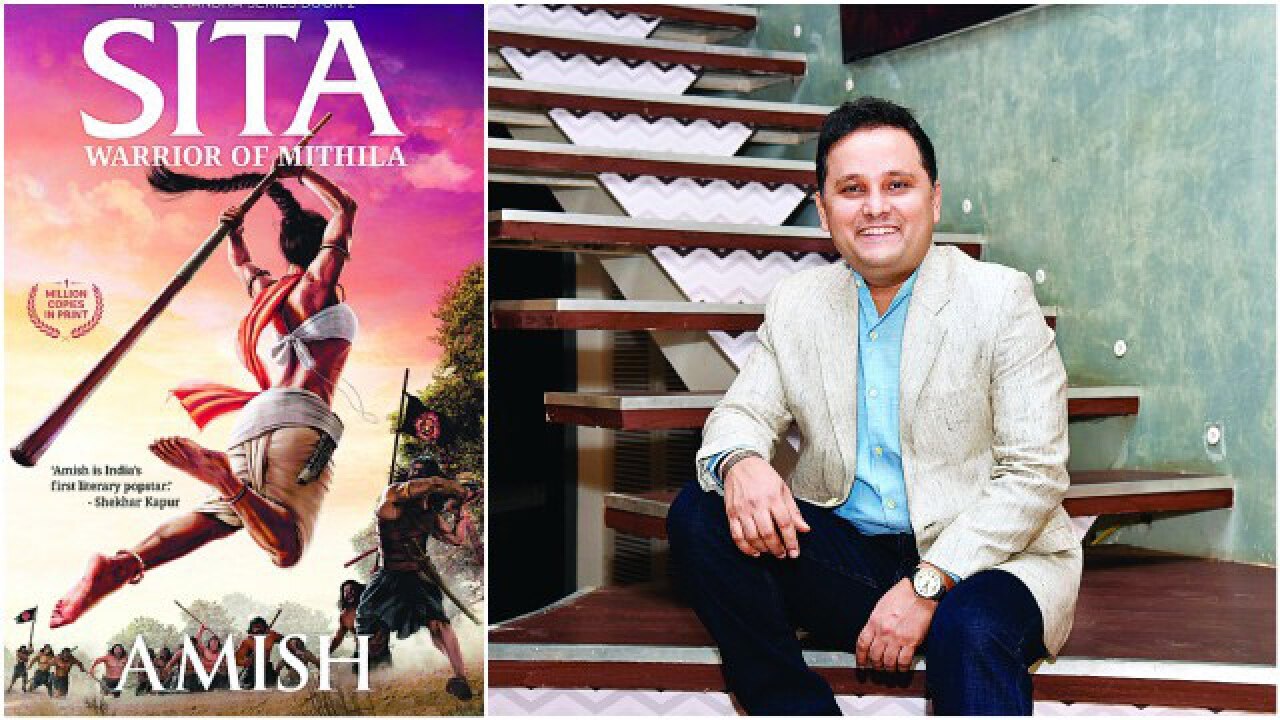
Ever since Scion of Ikshvaku, Book one of the Ram Chandra Series released two years ago, it’s been a long wait of two years for author Amish’s fans for the second one. Sita — Warrior of Mithila, released recently and the story of the warrior princess from her birth to her abduction by Raavan, has already garnered rave reviews from critics. Here, the author speaks about the portrayal of Sita in his book, the multi-linear narrative approach he has taken and his future projects...
I’m sure you will agree that there is a problem in India today with the way women are treated. It’s a societal issue. We need to fight for equality. Equality is part of our own culture. You’re not being less Indian by fighting for women’s rights, in fact you’re being more Indian. You’re truly honouring the culture of our ancestors. Fortunately for us, these stories are there in our ancient past. It’s not that we have to make them up. All we need to need to do is find them, revive them and communicate then in a modern manner. So the chances of having an impact are higher.
She has shakti inside her, and she will do what needs to be done for the larger good. She can be a little more ruthless than Lord Ram for the larger good. Dharma is her driving force. Most of us are familiar with the Sita of the 1980’s TV serial, but there were many aspects of hers that were not explored. She was an adopted child in a royal family. Can you imagine the challenges she must have faced, and what kind of strength of character does it take to beat that?
This kind of storytelling technique has been seen abroad, not so much here. Rashomon, the Japanese movie, follows this kind of storytelling. I’d seen it many many years ago and it was something that always remained in my mind. I thought it was such a brilliant, kickass way of storytelling. Even the Shiva trilogy has twists and turns, but it’s a linear story. What’s even more fun for a storyteller, is for the reader to have already read something in the previous book, but to not even notice that there was a twist out there. They will notice it now in the second book. It’s like discovering a twist that happened in the future. While writing the second book, I realised this is extremely complex. That’s why it took two years for the second book. But now, it’s much clearer to me, so the third book should be out next year.
Look at the bright side, George RR Martin takes seven years, I only took two! (laughs)
I think the Indian public is far smarter and nuanced than what we give them credit for. Unfortunately, public debate has been taken over by two groups of extremists — the left wing extremists and the right wing extremists. Both of them keep shouting at each other, but most common Indians are resolutely in the center. They are deeply religious and deeply liberal and they understand nuance. We get scared because of the ugly debates on Twitter, but how many people are there on Twitter? Or on TV channels and op-eds? It’s a small number of people who shout and scream a lot. They are not India. It might sound theoretical, but my books have sold a good number of copies by God’s grace, and there has not been any controversy.
I have enough ideas on mythology for the next 20-25 years. I intend to keep writing them, and have left clues for all those books that I’m going to write in the Shiva trilogy. I have some non-fiction books in mind as well. Some books on philosophy, social subjects etc, the first of which, Immoral India will release in August. That is a book on various social issues, a summation of my articles, speeches and fresh content I have written on caste system, women’s rights, freedom of expression, LGBT rights etc. I also have books in mind for historical fiction as well. My biggest fear is to be able to get these stories out before I die. Can’t take them to my cremation pyre! (laughs)
Rani Rudrama Devi: She was a shudra Kakatiya empress. She used to lead her army into battles and ruled for nearly 40 years.
Rani Abbakka: She was probably one of the first Indian rulers to defeat a European army.
Bhopal Begums: There is an assumption that Muslim women are docile, but here, the daughter used to succeed the mother. They were reformists who pushed education and pushed women empowerment.
Rani Durgavati or the Gond queen: She fought and defeated Akbar.
Price & publication: Rs 350, Westland Press